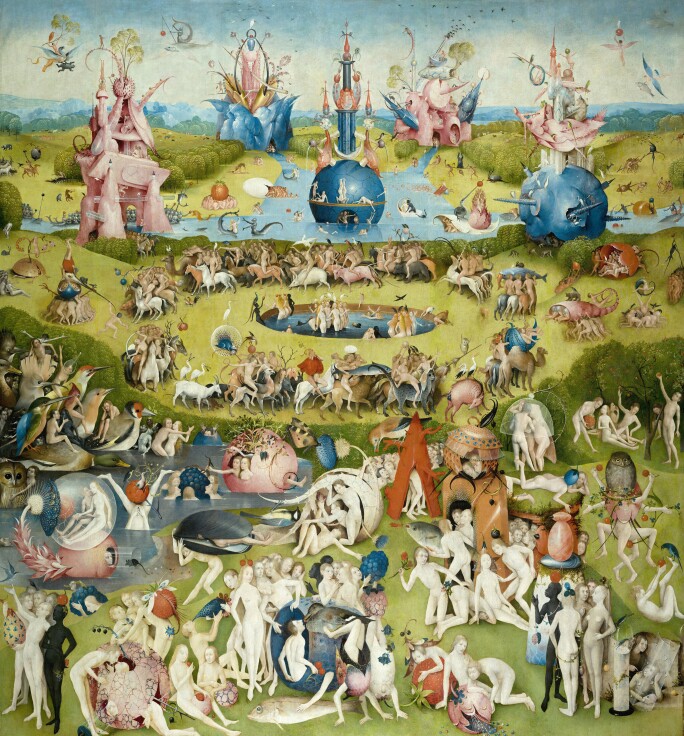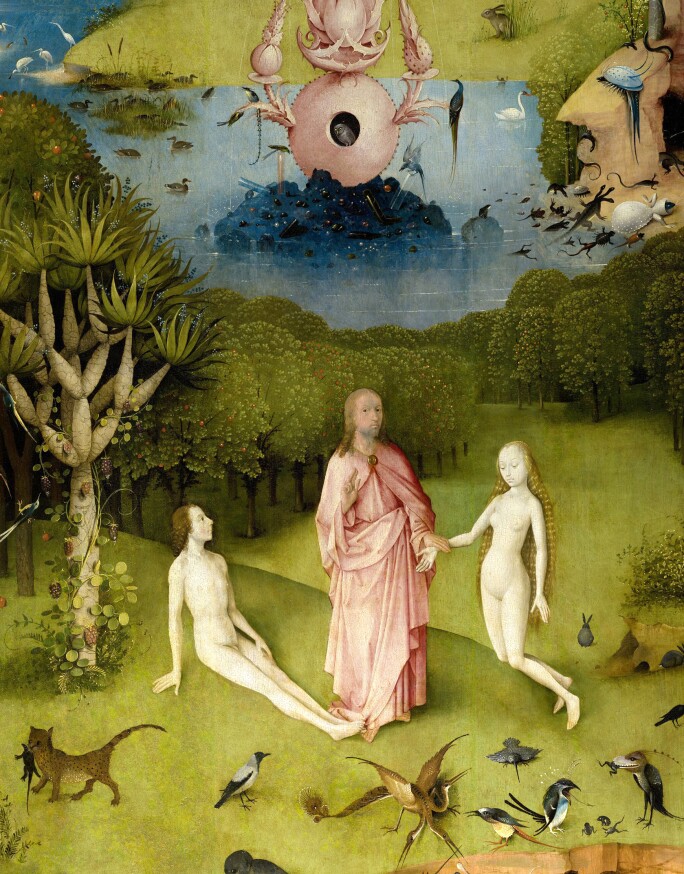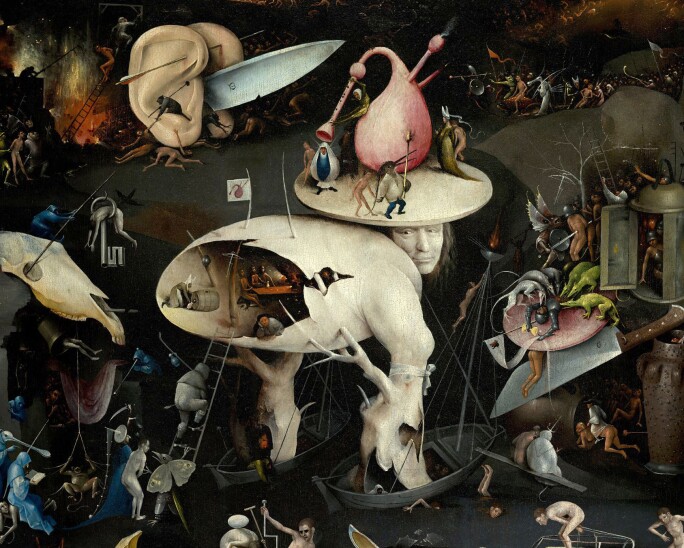Thelma
at the Prado
After Bosch’s Garden of Earthly Delights
After Bosch’s Garden of Earthly Delights
Hell
might as well be on another planet,
circling a distant, winking star.
circling a distant, winking star.
Musical
instruments litter the parched surface
where the damned swarm out from a shattered bass.
where the damned swarm out from a shattered bass.
Bosch
has tattooed musical notes
on naked bodies strewn across hard stone.
on naked bodies strewn across hard stone.
Beside
an overturned table, a gap-toothed girl glares.
Balancing a die on her head like a halo,
Balancing a die on her head like a halo,
she
sings off-key to a rabbit’s blasts on a pipe.
In the background, all buildings burn.
In the background, all buildings burn.
Sinners
break ranks like beetles,
riding knives on the acidic river
riding knives on the acidic river
 The Garden of Earthly Delights [center panel] -- Hieronymus Bosch
The Garden of Earthly Delights [center panel] -- Hieronymus Bosch
The Garden of Earthly Delights [left panel] -- Hieronymus Bosch

The Garden of Earthly Delights [center panel] -- Hieronymus Bosch
Joen van Aken was born (maybe ca. 1450) in his grandfather's house in 's-Hertogenbosch (colloquially called Den Bosch) -- "the Duke's forest," founded by Hendrik I van Brabant in the 12th century. Only about 25 paintings and 8 drawings are confidently attributed to him (7 are signed "Jheronimus Bosch," though the practice of artists signing their work was unusual at the time; some of the signatures are forgeries), and another 1/2 dozen paintings are attributed to his workshop. He left behind no letters or diaries, and the only information about him is derived from references in the town's municipal records and in the account books of the Illustre Lieve Vrouwe Broederscha (Illustrious Brotherhood of Our Blessed Lady), a local religious confraternity to whom his father was the artistic director. It is unknown when "The Garden of Earthly Delights" was painted, but in 1517, a year after Jheronimus' death, canon Antonio de Beatis of Molfetta, Italia, described it as part of the decoration in the Bruxelles palace of count Henry III of Nassau-Dillenburg-Dietz: "There are some panels on which bizarre things have been painted. They represent seas, skies, woods, meadows, and many other things, such as people crawling out of a shell, others that bring forth birds, men and women, white and blacks doing all sorts of different activities and poses." When the count died in 1538 the painting passed to his nephew Willem van Oranje, the leader of the Dutch war of independence against Spain. In 1568 Fernando Álvarez de Toledo y Pimentel, 3rd Duke of Alba de Tormes, confiscated it; known as "the Madroño" (the strawberry tree, Arbutus unedo) it passed to Felipe II's illegitimate son Fernando, and then to Felipe in 1591.
ReplyDeleteMuch of the Spanish royal art collection was eventually housed in the Museo del Prado in Madrid. The Paseo del Prado (the "walk in the fields"), where it is located, is one of the city's main thoroughfares and its oldest historical city street. The building was designed in 1785 by Juan de Villanueva to house the "Natural History Cabinet" but in 1819 its purpose was altered to become a Royal Museum of Paintings and Sculptures, holding 1,510 works taken from the various royal residences. When Isabella II was deposed in 1868 the museum was nationalized and renamed after the street on which it was located. It was subsequently enlarged by adding the collections of other museums upon their closure, especially the Museo Nacional de Pintura y Escultura (also known as the Museo de la Trinidad) in 1872 and the Museo de Arte Moderno in 1971. Today its holdings include around 8,200 drawings, 7,600 paintings, 4,800 prints, and 1,000 sculptures, as well as historic documents and other items.
ReplyDelete